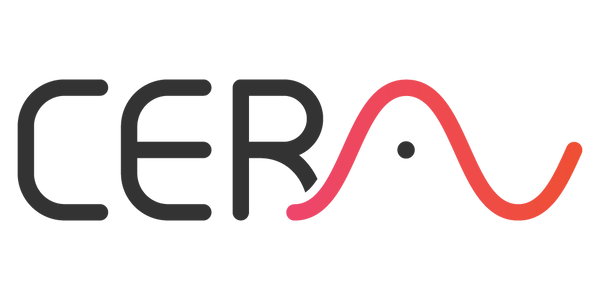
The Future of Fitness Tech: How Portable Red Light Therapy Devices Revolutionize Recovery and Performance
CeraThrive LLCIntroduction: A New Era in Fitness Recovery
Athletes and fitness enthusiasts constantly seek innovative ways to enhance performance, speed up recovery, and minimize injuries. From wearable fitness trackers to AI-powered workout apps, the fitness tech industry has evolved rapidly. However, one of the most groundbreaking advancements today is the Portable Red Light Therapy Device. These compact, high-tech tools are revolutionizing recovery by accelerating healing, reducing inflammation, and boosting cellular energy. In this article, we'll explore how red light therapy (RLT) is transforming fitness and why portable devices are set to redefine recovery and performance optimization.
What is Red Light Therapy?
Red Light Therapy (RLT), also known as photobiomodulation (PBM), uses specific wavelengths of red and near-infrared (NIR) light to penetrate the skin and interact with cells. The primary function of RLT is to enhance mitochondrial function, the powerhouse of cells, leading to increased adenosine triphosphate (ATP) production. ATP fuels muscle repair, reduces oxidative stress, and improves blood circulation—crucial elements for post-workout recovery.
Key Benefits of Red Light Therapy for Athletes:
- Speeds up muscle recovery by reducing inflammation and oxidative stress.
- Enhances endurance and performance through improved cellular energy production.
- Relieves pain and soreness by increasing circulation and reducing lactic acid buildup.
- Accelerates injury healing by stimulating collagen and tissue regeneration.
- Improves sleep quality—essential for optimal muscle repair and cognitive function.
For more information on the science behind RLT, check out this research article on red light therapy.
The Rise of Portable Red Light Therapy Devices

Traditional red light therapy was primarily available in clinics, spas, and professional sports facilities. However, advancements in technology have led to the development of compact, portable, and affordable RLT devices that bring professional-grade therapy into homes and gyms.
Why Portable Red Light Therapy Devices Are Game-Changers
- Convenience and Accessibility Users can now enjoy the benefits of RLT anytime, anywhere—whether at home, the gym, or while traveling.
- Cost-Effective While in-clinic RLT sessions can be expensive, owning a portable device provides long-term savings.
- Personalized Treatment Devices like the CERA System by CeraThrive allow users to target specific body areas, adjusting intensity and duration based on individual needs.
- No Side Effects Unlike painkillers or invasive procedures, RLT is non-invasive and has minimal to no side effects, making it an excellent alternative for recovery.
To learn more about different types of red light therapy devices, visit this guide on choosing the best RLT device.
How to Use a Portable Red Light Therapy Device for Maximum Benefits
To harness the full potential of your Portable Red Light Therapy Device, follow these best practices:
1. Post-Workout Recovery
- Apply the device to sore muscles for 10–20 minutes after exercise.
- Target areas prone to inflammation, such as knees, shoulders, and lower back.
- Use near-infrared wavelengths (850nm-1070nm) for deeper tissue penetration.
2. Injury Rehabilitation
- Position the device directly over the injured area for 15–30 minutes.
- Use daily treatments to accelerate healing and reduce stiffness.
- Combine RLT with gentle stretching and mobility exercises for optimal results.
3. Performance Enhancement
- Use RLT before workouts to increase circulation and reduce stiffness.
- Target key muscle groups to enhance endurance and reduce fatigue.
4. Sleep Optimization
- Use RLT before bedtime to regulate circadian rhythms and improve sleep quality.
- Apply to the forehead or chest area to stimulate relaxation and melatonin production.
Scientific Backing: What Research Says About RLT for Athletes
Numerous studies support the effectiveness of Red Light Therapy in sports recovery:
- A 2021 study published in the Journal of Biophotonics found that RLT improved muscle performance and recovery in elite athletes.
- Research in the American Journal of Physical Medicine & Rehabilitation demonstrated a significant reduction in muscle soreness after applying near-infrared light therapy post-exercise.
- The Journal of Athletic Training reported that RLT increased tissue repair and collagen production, helping athletes recover faster from injuries.
For further insights, listen to this expert podcast on red light therapy: 🎙 Rebel Light: John Graham Harper of LumaFlex
Choosing the Right Portable Red Light Therapy Device

When selecting an RLT device, consider these factors:
- Wavelength Range: Look for devices offering 630nm, 850nm, 940nm, and 1070nm, as these penetrate different tissue depths.
- Portability: Ensure the device is lightweight and rechargeable for on-the-go use.
- Ease of Use: Opt for a device with preset programs like the CERA System for guided therapy.
- FDA Approval: Choose devices with clinical validation and safety certifications.
One standout option is the CERA System by CeraThrive, which uniquely targets the gut-brain axis to enhance cognitive function while promoting whole-body recovery.
Final Thoughts: The Future of Fitness Recovery is Here
The integration of Portable Red Light Therapy Devices into fitness routines is a game-changer. Whether you're an elite athlete, weekend warrior, or simply looking to optimize your recovery, RLT offers a safe, effective, and scientifically-backed solution. As technology advances, we can expect even more innovative applications of red light therapy in fitness and wellness.
So, are you ready to supercharge your recovery and performance? Try the CERA System today and experience the future of fitness tech firsthand!
